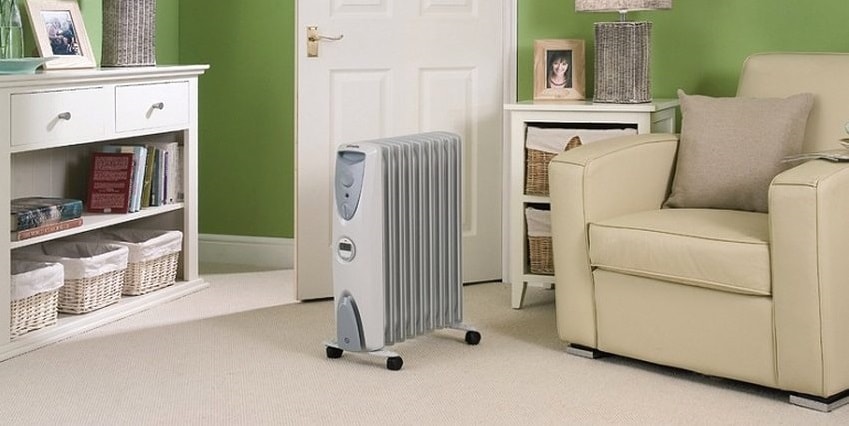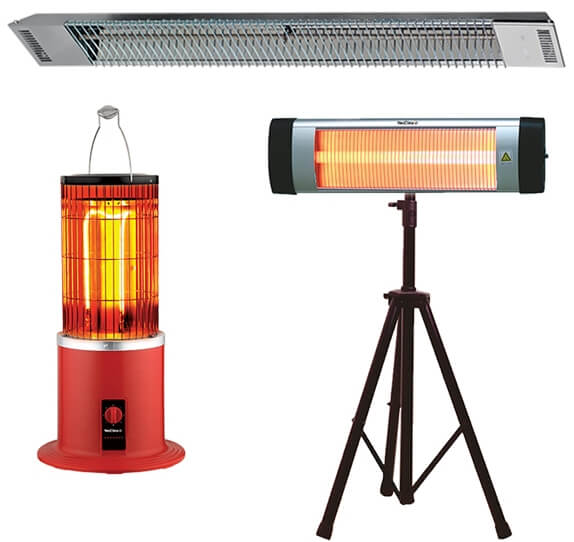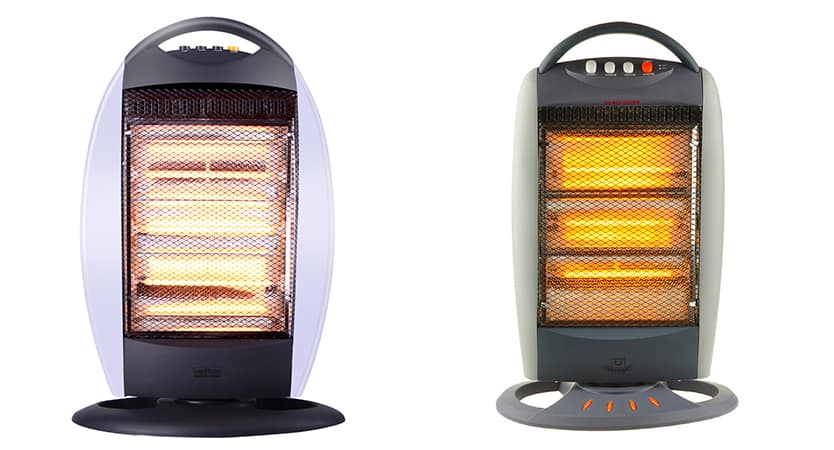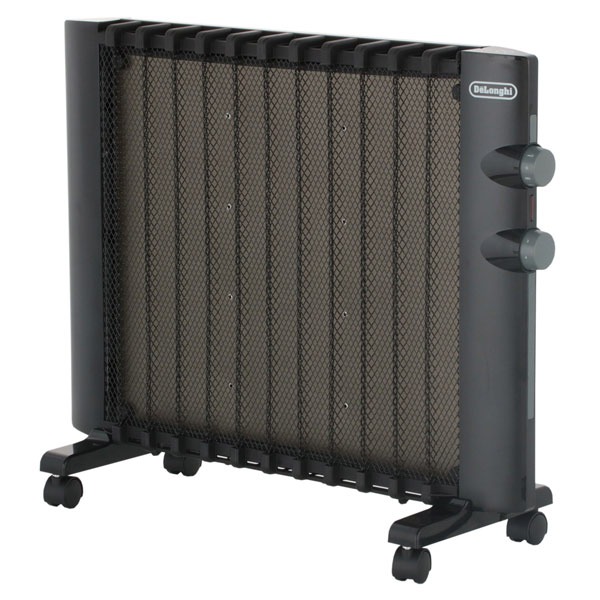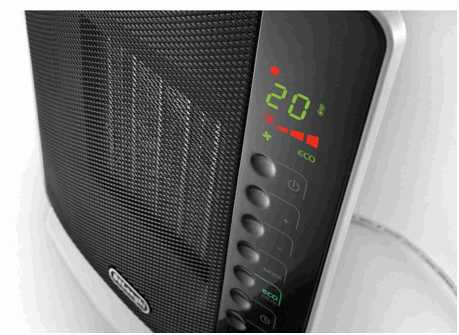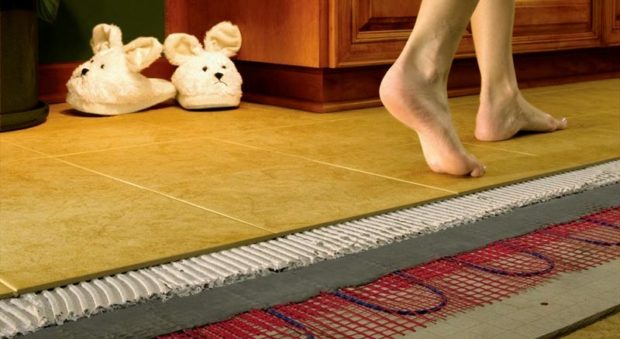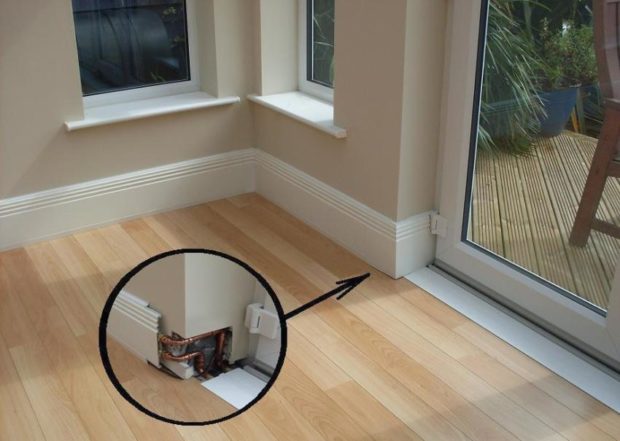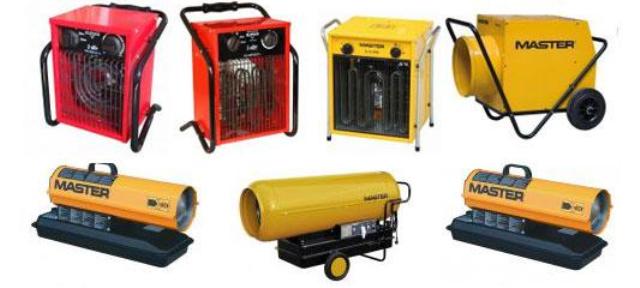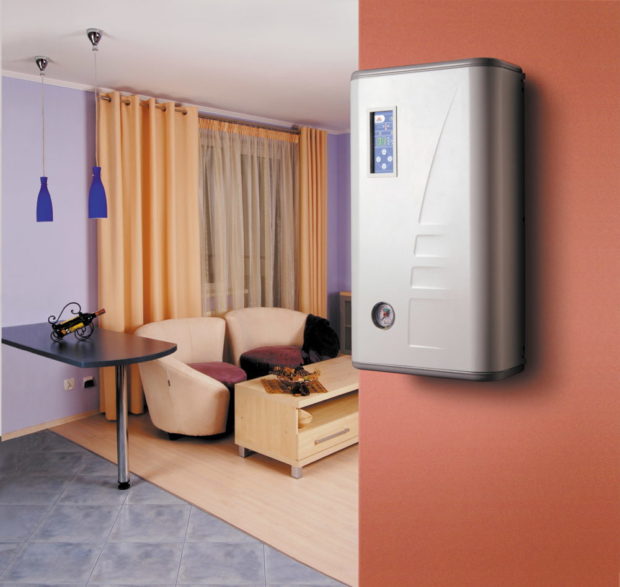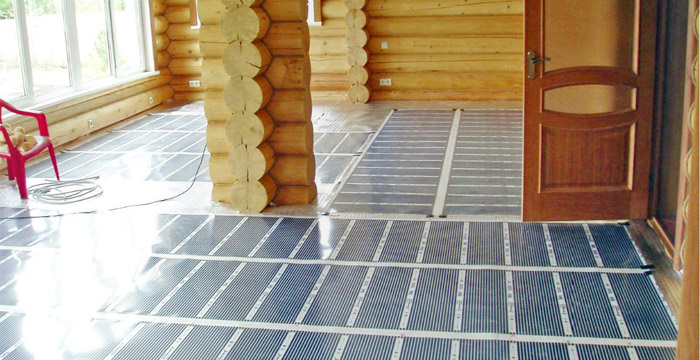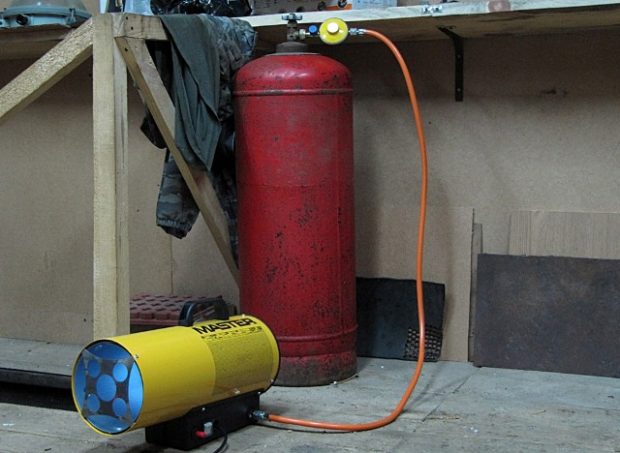6 tips for choosing an electric heater for home and garden
A person is a thermophilic creature, and when the weather is dank outside and the heating in the apartment has not been turned on or has already been turned off, we begin to intensely search for another source of heat. Tea with a blanket is, of course, good, but they are not enough. The solution lies on the surface - use an electric heater, but as soon as you decide to buy, you will come across such a frenzied assortment that your head will spin. In order to avoid wrong decisions and rash purchases, we must figure out what to consider when choosing a heater for the house and cottage before going to the store. We have collected the most relevant information for you.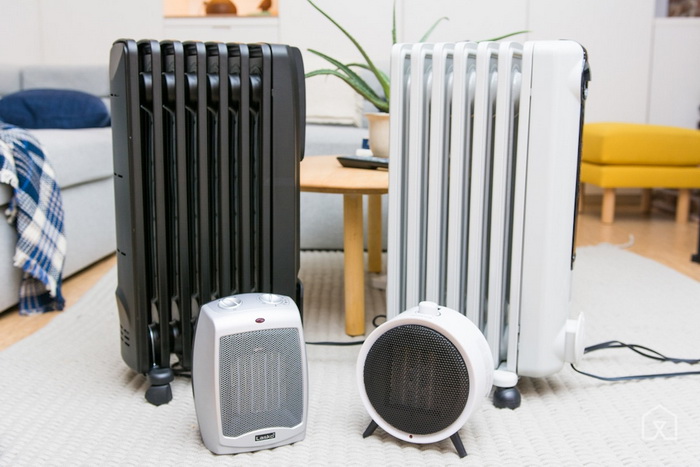
Heater type
Fan heaters are used for space heating, heat guns, oil radiators, convectors, thermal curtains and infrared heaters. Different types of equipment are suitable for different conditions. - that which will save in a city apartment is completely not suitable for summer cottages, and vice versa.
Fan heater
The design of the fan heater is quite primitive. It is based on a heating element and a fan. Cold air passes through the heating element, its temperature rises sharply, and the fan helps to quickly “inflate” it around the room. This simple solution allows you to literally instantly warm the air in the room.
As a heating element can be used metal spiral or ceramic plate. The first option is more affordable, but during operation, you can smell burnt dust, since polluting particles fall directly on the heating element and burn through it. If a ceramic plate is used on top of a metal spiral, then there will be no unpleasant smell, but such a solution is more expensive. Another solution is metal or graphite heater. In this case, the heating element is placed in a tube with sand or manganese oxide. The design allows you to more evenly distribute heat, but has an impressive cost.
All fan heaters have power and temperature control, and the most advanced models get the function ionization, humidification, timer, can rotate, remotely controlled. In terms of design, everything is also diverse, and if you look, you can find a very stylish device that can serve as a real decoration of interior.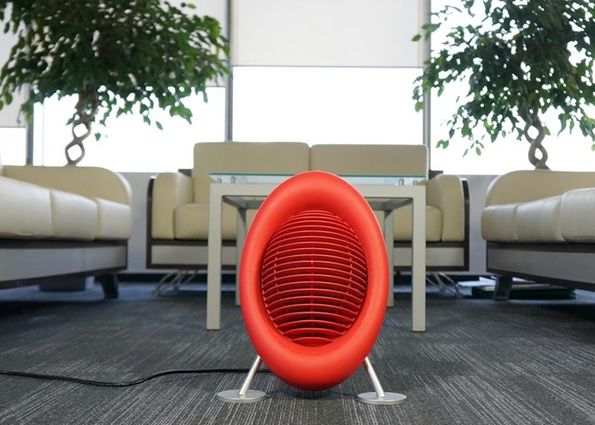
pros:
- low cost;
- they quickly heat the air, after 15-20 minutes it will be comfortable in the room, because often fan heaters are used in cottages;
- light weight and mobility - it is very easy to carry the device;
- the case practically does not heat up, therefore it is impossible to get burned;
- huge assortment - you can choose a model by price, design and features.
Minuses:
- noise during operation;
- not suitable for heating a large room;
- as soon as the device is turned off, the temperature will immediately begin to drop;
- dry the air;
- breakdowns occur more often than other types of heaters. The weak point is the heating element.
The fan heater is perfect for heating a room in the country, but it is also useful in a city apartment when you need to warm the room as quickly as possible. If you are looking for a heater for continuous operation, it is better to consider other solutions.
 You can order a home heater at SDM Climate. The store offers a huge assortment of fan heaters, heat guns, convectors, thermal curtains and other climatic equipment. The choice is constantly expanding by adding new products. The company sells only certified products, so you can be sure of quality. Employees are always ready to help with the selection of suitable equipment, and after the purchase the order is sent almost instantly.
You can order a home heater at SDM Climate. The store offers a huge assortment of fan heaters, heat guns, convectors, thermal curtains and other climatic equipment. The choice is constantly expanding by adding new products. The company sells only certified products, so you can be sure of quality. Employees are always ready to help with the selection of suitable equipment, and after the purchase the order is sent almost instantly.
Heat gun
It is actually the same fan heater, only more powerful and bulky. Suitable for heating large rooms, often used in garages and in warehouses. The advantages and disadvantages are the same as with a conventional fan heater, only there will be more noise during operation.
Heat gun very high power, and not every wiring "Pull" such a load. Most models need to be connected to a three-phase network.
Oil heater
Externally, such a heater resembles a conventional heating radiator, it only connects to the electrical network. The heating element here does not heat the air, but the heat carrier is mineral oil, which warms up relatively slowly, but also slowly gives off heat. Hot oil heats the metal case, and the case already warms the air. The heating temperature is controlled by a thermostat. For more convenient transportation, rollers are provided. Some models are equipped with a timer. There are also appliances with a fan, which allows more efficient distribution of warm air throughout the room.
pros:
- lack of noise during the work;
- appliances remain warm for a long time even after turning them off from the network, thereby ensuring efficient heating of the room;
- profitability;
- Do not dry the air, as all heating elements are securely hidden in the housing.

Minuses:
- bulkiness;
- long heating. The appliance will warm up to a maximum of at least 20 minutes. This is the retribution for the same slow cooling;
- low mobility. Due to the wheels, the heater can be moved around the apartment, but you need a car to transport it to the country house - this is not a fan heater for you;
- the body warms up quite a lot, so you can get a burn;
- price. Such devices are not so expensive, but a high-quality device will cost several times more than the same fan heater.
An oil heater is an ideal solution when you need a device for continuous heating of air. If there are problems with centralized heating, then for an apartment this will be the most suitable solution. You can use such devices in the cottages, especially if you spend enough time there.
Convector
The principle of operation of convectors is somewhat similar to the operation of a fan heater. Cold air masses enter the device, pass through the heating element and exit already warm. Instead of a fan, the convection principle is used here: warm air masses rush under the ceiling, displace cold air from there, which goes down and passes through the heating element. The process is repeated many times. Some manufacturers, however, equip their models with fans to make the heating process even more efficient.
In cheaper convectors, a metal plate is installed on which dust particles burn. If the budget allows, it is better to opt for devices with a ceramic plate.
By type of installation, convectors can be floor and wall, there are models that can be used both ways.The body in most cases is quite thin, so there should be no problems with the placement of the heater. Advanced models are equipped with a timer.
pros:
- silent work;
- compactness and esthetics;
- safety - the case does not heat up so much that you can get burns;
- low price.
Minuses:
- relatively long heating;
- dries the air.
A convector is a good solution for local heating. Ideal for use, for example, on insulated loggia or in the bedroom. Heats up large rooms poorly.
Infrared heater
Infrared heaters work fundamentally different. They do not heat air, but surrounding objects, including people. Like a sun. At the heart of such a heater is a carbon, quartz or halogen lamp that generates infrared rays. Once in the zone of their influence, objects immediately heat up, and then air warms up from them. Such a heating system can be implemented in the format of a traditional heater, film (hung on a wall or ceiling), ceiling panel.
pros:
- heat can be felt immediately after turning on the heater;
- lack of noise;
- durability;
- the ability to use in open air areas;
- profitability;
- does not dry air;
- a large selection of models, you can find those that are hung on the wall, on the ceiling, installed on the floor.

Minuses:
- price;
- the possibility of overheating with prolonged exposure to infrared rays;
- only the zone where the infrared rays get is warmed up;
Infrared heaters are suitable in cases where you need to instantly heat the local area. They are indispensable in open terraces, in pergolascan be used in bathrooms. If you leave the range of the infrared heater, a temperature difference will be felt.
Halogen heater
By the principle of operation, such devices are somewhat reminiscent of infrared heaters, only the tube with a tungsten spiral inside becomes the heart of these devices. The tube is filled with inert gas.
pros:
- fast heating;
- mobility;
- profitability.
Minuses:
- the tube is a weak point of the device, it is quite fragile, therefore, with a high degree of probability it will have to be changed often;
- a bright light emits from the heater, which can be annoying, especially at night.

Thermal curtain
Such heaters are installed above the doorway to create a barrier to the entry of cold air. Usually used in shopping centers and shops, but sometimes there is a need to use them in country houses. In this case, the heater will be only part of the heating system. It works on the principle of a fan heater. Cold air is drawn in by the fan into the heater, passes through the heating element, and comes out already heated.
pros:
- good protection against street cold.
Minuses:
- high price.

Electric fireplace
Electric fireplaces usually used with decorative function. Imitation of live fire, the sound of crackling logs fills any room with comfort, while there is no need to solve a lot of issues with the arrangement chimney. On sale there are fireplaces that not only simulate a fiery flame, but also give tangible heat - functionally and conveniently. A heating element is installed inside the device, and thanks to the ventilation system, heated air will gradually fill the entire room.
pros:
- decorativeness;
- ease of installation.
Minuses:
- high energy consumption, but one fireplace will be able to qualitatively warm the middle room. Before buying, it is worth clarifying whether the wiring can withstand such a load;
- dries the air.
An electric fireplace will be appropriate both in the living room of the apartment and in the country house. In the country, using such a device makes sense only if you spend a lot of time there.
Monolithic Quartz Heaters
The heater body consists of a mixture of quartz sand and marble chips.A heating element is hidden inside the case, which heats up to 1200C. The case heats up to 950C. Heat is distributed by convection. The case itself retains heat for a long time.
pros:
- profitability;
- does not dry out the air;
- the ability to use in rooms with high humidity, as the heating elements are securely hidden in the case;
- low cost.
Minuses:
- heavy weight;
- not everyone likes the appearance of the heater, but interchangeable panels solve this problem.
A quartz heater is an excellent solution for both a city apartment and a country house.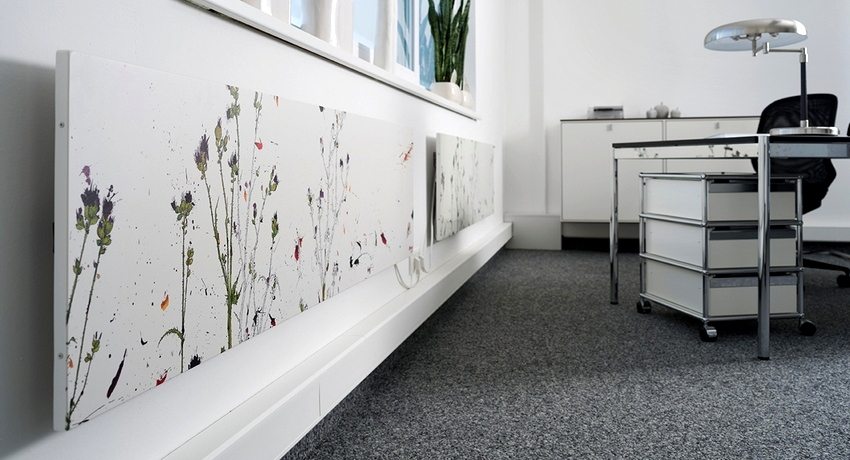
Mycothermal heater
This is a novelty in the heater market. The device according to the principle of action is a mix of infrared and convection heaters. Inside it is a plate, in the center of which there is a nickel grid, on both sides it is covered with plates of mica. The grid heats up, and the mica is responsible for the correct temperature distribution.
pros:
- does not dry air;
- profitability in terms of electricity consumption. Such a device "eats" an average of 25% electricity than other types of heaters.
Minuses:
- cost;
- not suitable as the only heat source.

Heater power
The choice of the optimal heater power depends on many factors:
- area of the room;
- ceiling height;
- number of windows;
- quality thermal insulation;
- temperature difference inside and outside the room;
- the presence of other sources of heat;
- the presence of equipment with high heat dissipation (some televisions, computers);
- the side overlooking the room’s windows, etc.
Of course, when choosing an electric heater for domestic use, few people will use complex formulas for calculating power, so you can use a simple rule. For every 1 m2 the area must provide 100 watts of heater power subject to a standard ceiling height (about 2.7 m). For each window, it is better to add 200 watts of power. It turns out that for a room of 15 m2 with one window, a 1.7 kW heater is suitable.
With a ceiling height of more than 3 m, the following calculation procedure is used. The area must be multiplied by the height of the ceiling and divided by a factor of 30, and then add 200 watts to each window. So, for a room of 15 m2 and a ceiling height of 3.2 m (one window) you will need a heater with a power of 1.8 kW.
Many manufacturers indicate what area the heater is designed for.
If the room has another source of heat, then you can take a less powerful heater. If we are talking, for example, about a cottage where there are no other sources of heat, then it is better to take a heater with a power reserve, provided that the wiring allows. Remember that with constant operation at maximum power, the heater crashes faster.
Most devices have several operating modes and are equipped with a thermostat, so that it is convenient for you to maintain a comfortable temperature.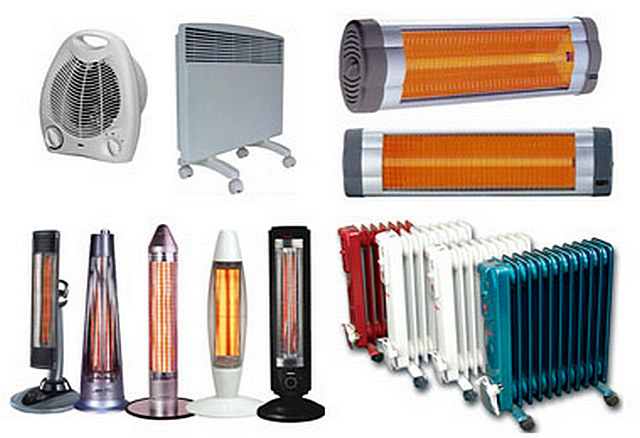
Control system
Heater control happens:
- mechanical. These are buttons familiar to us all and rotary knobs. A reliable and easy-to-use system, but the heating temperature can be set with it only approximately, because the lever is placed in the “minimum”, “maximum” position or one of the intermediate values. You will have to study the intricacies of the device for some time to understand in which mode the optimum temperature is reached. A little inconvenient, but the mechanical control system is very reliable, there is practically nothing to break;
- electronic. These are buttons (physical or touch) and the screen. Thanks to this control, you can set the temperature with an accuracy of a degree, set a timer, schedule on / off. The display will show room temperature, time, and possibly other information. Typically, control is provided using the remote control;
- smartphone remote control - the most advanced option.Thanks to special applications, you can remotely control the operation of the heater. For example, turn it on 30 minutes before returning home. Conveniently, but for this functionality you have to pay a lot of money.

Mounting type
Think in advance where you want to put the heater, and how often you plan to move it. Depending on this, choose one of the possible installation options:
- floor;
- wall;
- ceiling;
- installation on any horizontal surface (relevant for fan heater).
Some models provide several mounting options. Convectors, for example, can be placed on the floor or attached to a wall. For easier movement, some heaters are equipped with wheels.
Noise level
The manufacturer in the characteristics of the goods indicates the maximum noise level. If you plan to put a heater in the bedroom or in the nursery, be sure to pay attention to this parameter. IR heaters are considered the quietest; oil, micathermic and quartz heaters are not very noisy. Further on the level of noise are convectors and fireplaces. The noisiest ones are fan heaters and heat guns. Thermal veils also decently make noise, but they are installed at the entrance, so there will not be much discomfort.
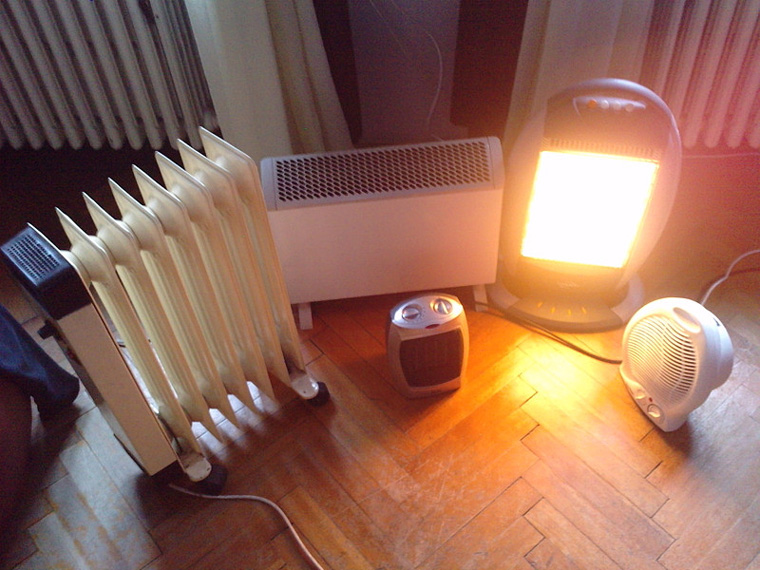
Additional features and security
To ensure maximum safety and comfort, when choosing an electric heater for an apartment and a summer residence, pay attention to the following functions:
- overheat protection it will protect both the device itself from damage and the apartment from fire;
- fall shutdown - a function that is found in almost all heaters. It probably makes no sense to talk about its importance;
- waterproof housing - ideal for rooms with high humidity;
- timer only available in electronically controlled heaters. At night, for example, you can configure the shutdown when you are already warm and fall asleep;
- delayed start allows you to save a lot, providing yourself maximum comfort. It's great to wake up in an already warmed room or return to a warm apartment;
- the presence of an ionizer and a humidifier optional, but if the family has allergies or small children, then the opportunity to improve air quality will be welcome.
Do not forget to pay attention to the name of the manufacturer. Heaters from Ballu, DeLonghi, Electrolux, Timberk, Neoclima, Vitek, Polaris, Neoclima showed themselves well. Before buying, it is advisable to read reviews on the models you are interested in.
In conclusion
So which electric heater is better for an apartment, and which one is for a summer residence? For a summer residence, it is worth taking the most mobile devices, which in winter can be easily taken to the city. In addition, they must quickly heat the room. These requirements are met by thermal fans and convectors, as well as infrared heaters, which are well placed in arbors and on terraces. For the apartment, all the heaters listed in the material are suitable - it is more to focus on your needs for heat and the requirements for the device.

